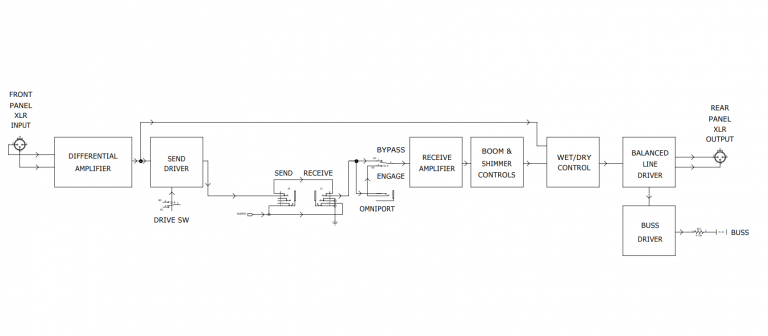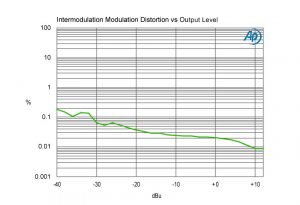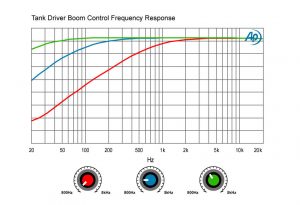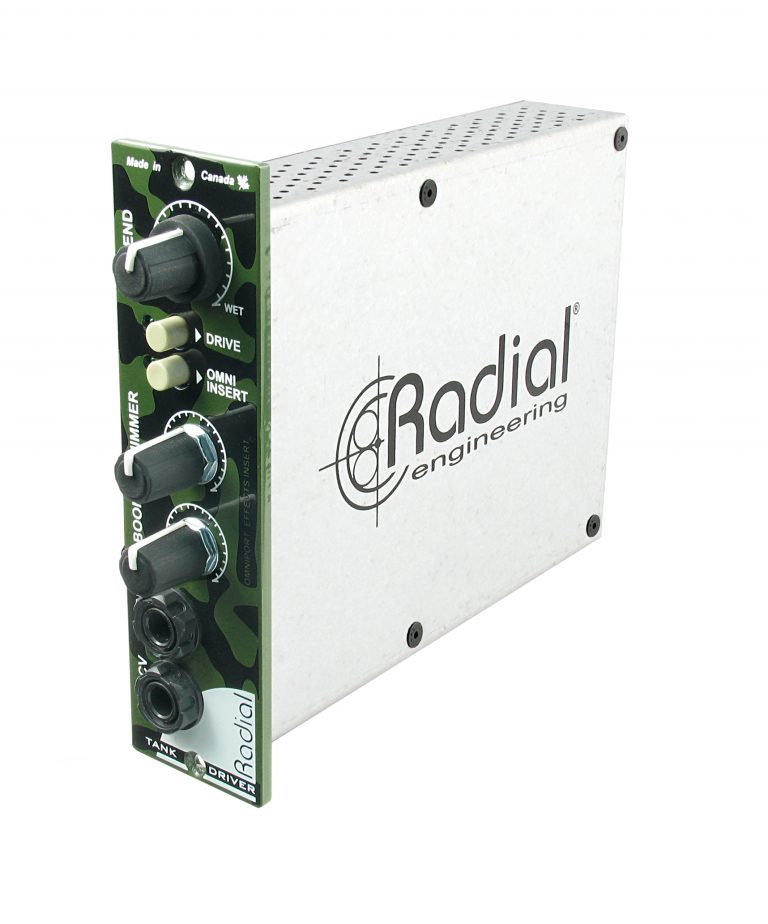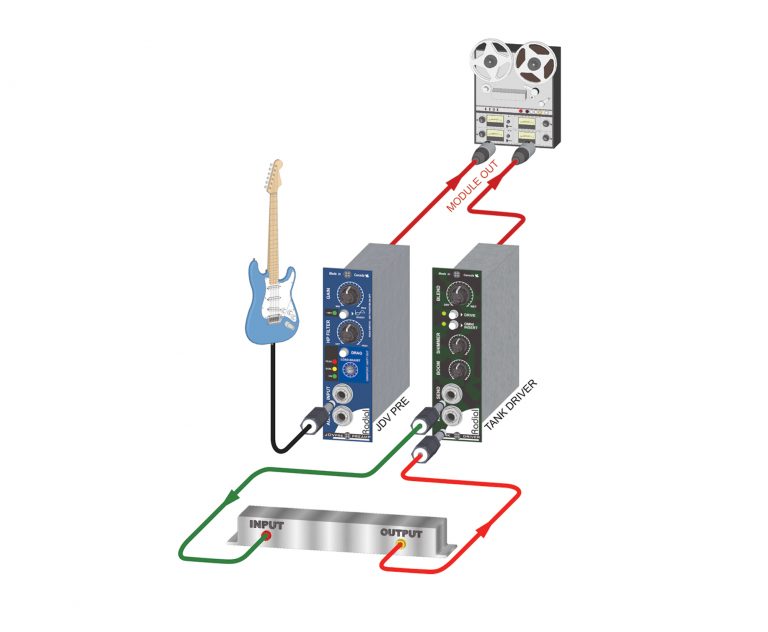The Radial Tank Driver is a unique interface that has been designed to work with most common spring reverbs. As such, the frequency response and tone shaping cannot be viewed in the same manner as one would a typical effect. The frequency response and drive network must be optimized to work within the confines of a spring reverb. Of note will be the high frequency Shimmer and low frequency boom control curves which allow the engineer to color the reverb to better fit the program material.
Specifications
Block Diagram
Graphs
| Specifications | ||
|---|---|---|
| Audio circuit type: | Opamp with discrete transistor isolated output (Drive section) | |
| Frequency response: | Shaped for spring reverb tanks | |
| Dynamic range: | 101 to 115dB (Drive section, varies with frequency) | |
| Gain: | +10dB (when Drive activated) | |
| Total harmonic distortion: | <0.01% @ -30dBu input level (Receive section) | |
| Intermodulation Distortion: | 0.0028% (Dry); 0.0021% (Wet) | |
| Output Impedance: | 1.5K Ohms (front panel) ; 200 Ohms (rear panel XLR output) | |
| Noise: | -100dB (Drive section - below 0dBu) | |
| Maximum Input: | +19dBu (rear panel XLR input); +26dBu (rear panel XLR output) | |
| Features | ||
| OmniPort | ||
| General | ||
| Construction: | 14-gauge steel | |
| Size (L x W x D): | 9" x 6.25" x 2" (228 x 159 x 51mm) | |
| Weight: | 1.5lb (0.7 kg) | |
| Power: | 65mA (maximum all LEDs) | |
| Conditions: | For use in dry locations only between 5°C and 40°C | |
| Warranty: | Radial 3-year, transferable | |
What do these graphs mean? Learn what to look for and why it matters.
Learn More
